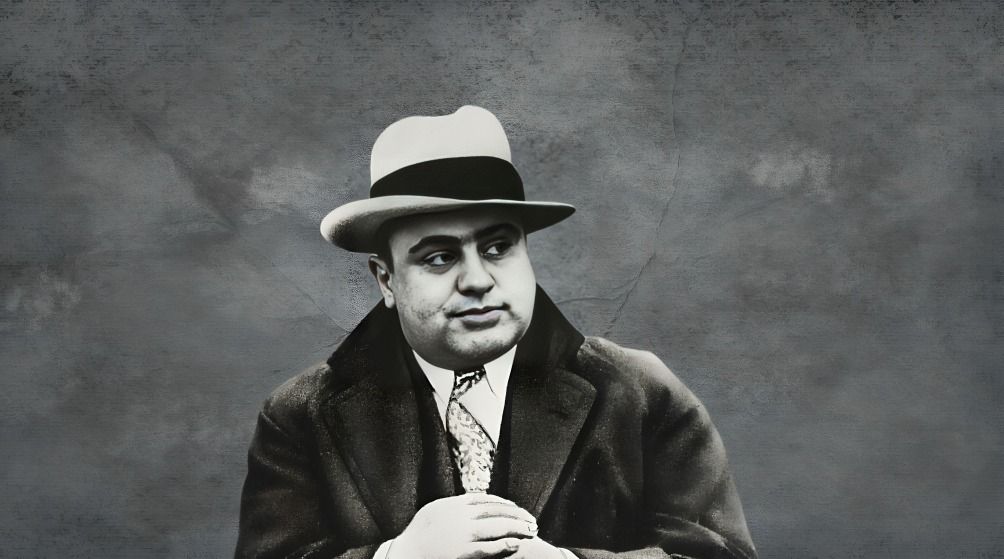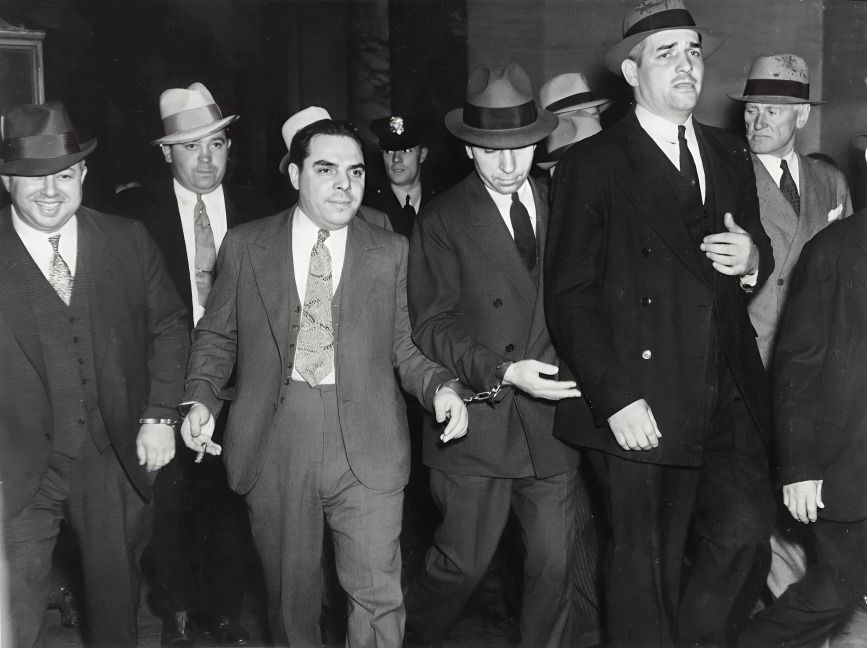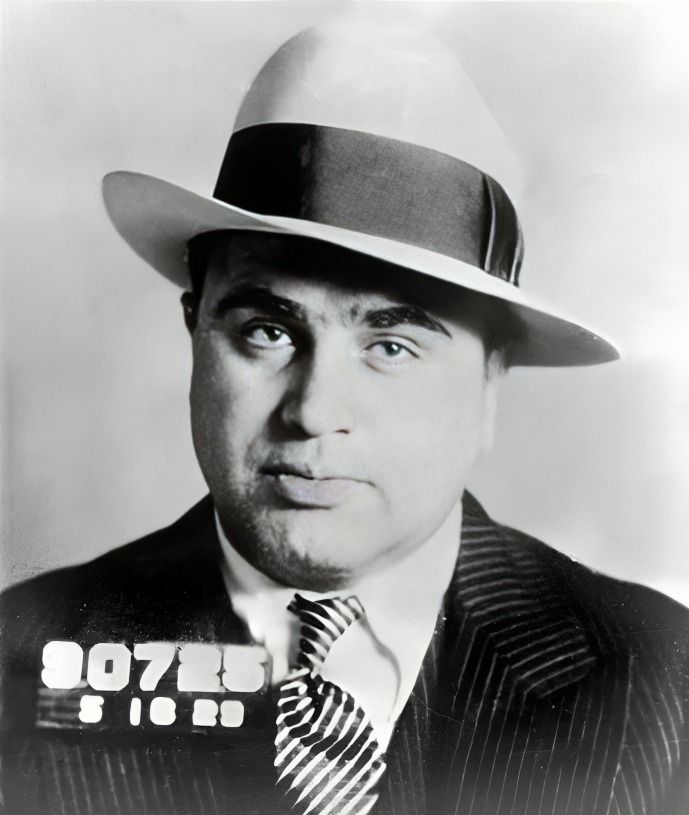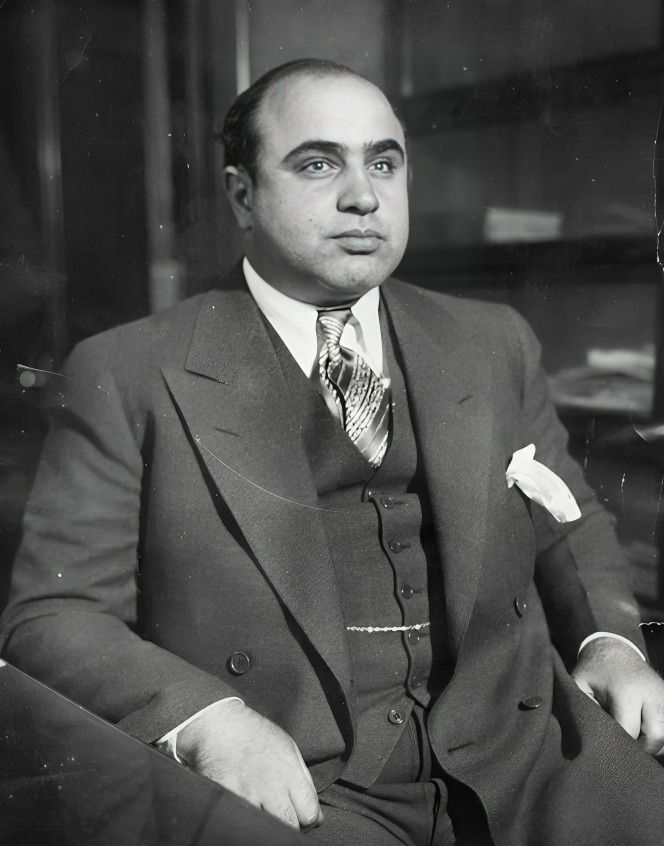
“
Al Capone, one of America’s most infamous gangsters, built a powerful criminal empire during Prohibition, thriving on bootlegging and gambling. Known for his ruthless tactics and sharp business sense, Capone became a millionaire and a public enemy. In this blog, we’ll explore 20 key facts about his rise and fall, including his methods, legal battles, and lasting legacy as a symbol of organized crime.1
”
Al Capone is one of the most notorious gangsters in American history. He led the Chicago Outfit, a powerful criminal organization that dominated organized crime during the Prohibition era.1
Capone's rise to power came through bootlegging alcohol during Prohibition. He supplied illegal liquor to speakeasies, giving him massive wealth and influence over politicians, law enforcement, and the public.2
Capone's empire was built on violence. He ordered numerous killings to eliminate rivals and protect his operations. His most infamous act was the St. Valentine’s Day Massacre, where seven men were killed.3
Despite his violent actions, Capone was known for his charm. He presented himself as a gentleman, often providing charitable donations to charities, orphanages, and public institutions in Chicago to improve his public image.4
Capone's criminal empire included more than just bootlegging. He also ran illegal gambling, prostitution, and extortion operations, using his vast resources to control almost every illicit activity in Chicago.5

Capone had a vast network of henchmen, many of whom were loyal and brutal. His right-hand man, Jack "Machine Gun" McGurn, helped execute some of Capone’s most infamous hits.
Capone's criminal operations were so profitable that he was able to bribe numerous law enforcement officers and politicians, ensuring his empire operated without interference from authorities for many years.6
Capone had a lavish lifestyle. He owned multiple homes, including a mansion in Miami Beach, and frequently hosted extravagant parties with celebrities and influential figures of the time.7
Despite his wealth, Capone’s tax evasion charges led to his downfall. The U.S. government could not pin him on murder or bootlegging, but they convicted him on charges of tax evasion in 1931.8
Al Capone’s prison sentence was marked by his celebrity status. He was sent to the notorious Alcatraz prison, where he continued to run parts of his criminal empire, though his health began to decline.9
Capone’s criminal empire reached national levels, with his influence extending to multiple states. His bootlegging network included the largest distilleries in the U.S., which helped fuel the national demand for illegal alcohol.10

Capone was a master of public relations. He was often seen as a Robin Hood figure, despite his violent ways, due to his habit of donating to public works and helping the poor.
The St. Valentine’s Day Massacre was a pivotal event in Capone's reign. The brutal murder of seven members of a rival gang shocked the nation and led to a crackdown on organized crime in Chicago.11
Capone’s ability to maintain control over his empire during his trial and incarceration was a testament to his influence. Even in prison, he was able to arrange for the continuation of his criminal activities.12
Capone's personal life was highly scrutinized. He married Mae Coughlin in 1918, and they had one child together. Despite his criminal dealings, he tried to keep his family life private.13
Capone spent his final years battling syphilis. After being released from prison due to his deteriorating health, he lived in his Miami mansion, where he eventually died in 1947.14
Capone’s influence extended beyond Chicago, with reports of him exerting control over criminal enterprises in New York, Pittsburgh, and even parts of Canada, making him a powerful figure on the national stage.15

The FBI had difficulty gathering evidence against Capone due to the extensive corruption within the police force, but eventually, Eliot Ness and his "Untouchables" succeeded in collecting enough evidence to convict him.
Capone was involved in high-stakes gambling operations. His criminal empire included running casinos, often using force to collect debts and maintaining control over illegal gambling circuits in Chicago.16
Capone's legacy lives on as one of the most infamous gangsters in American history. His ruthless tactics, immense wealth, and lasting impact on organized crime culture have cemented his place in criminal lore.17


